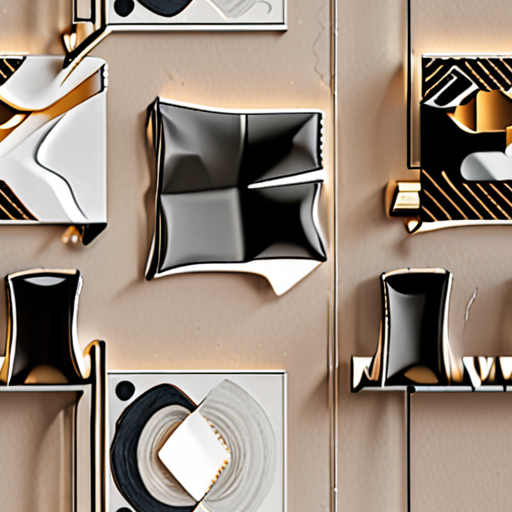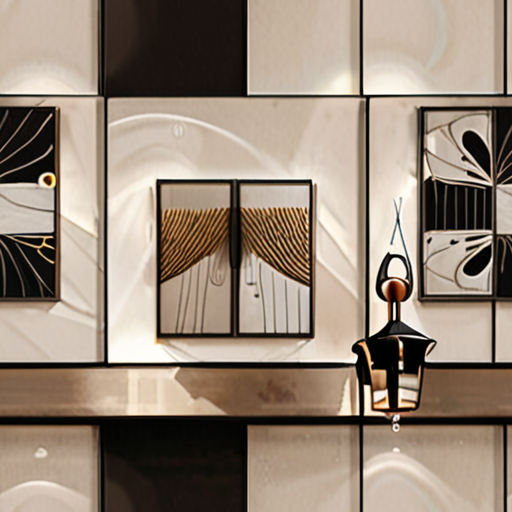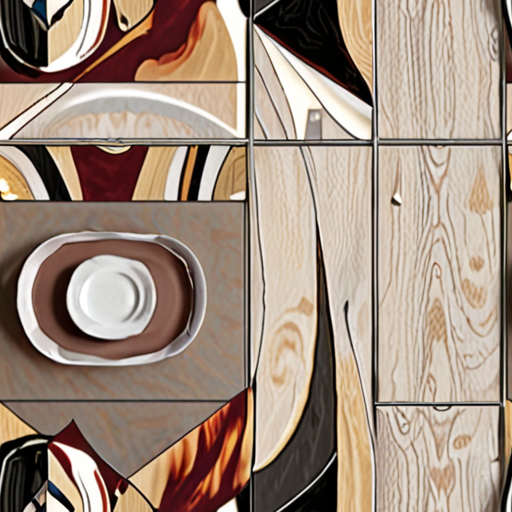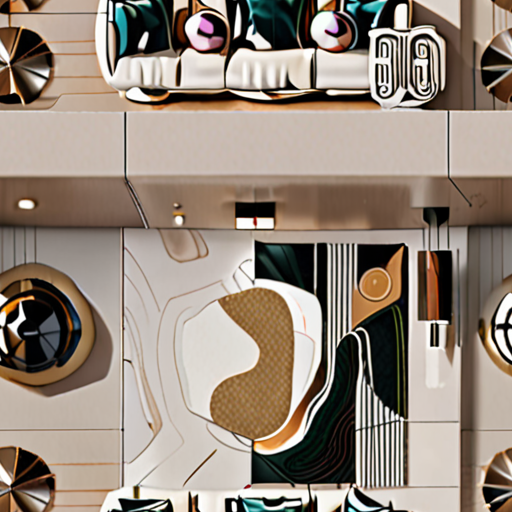Transform your living space into a visually stunning sanctuary by mastering the art of decorating with art. Whether you’re a seasoned decorator or new to the craft, incorporating artwork into your home can elevate your space to new heights of style and sophistication. From bold wall art to subtle decorative accents, the right pieces can breathe life into any room. Discover expert tips, learn how to balance layouts, and explore creative ways to blend art with other decor elements, ensuring your home reflects your unique taste. This guide dives into the essentials of decorating with art, offering practical advice for achieving a cohesive and captivating environment.

How Can I Decorate My House with Art?
To decorate your house with art effectively, consider the following organized approach:
1. Assess Your Space
- Evaluate the size and layout of each room to determine where artwork fits best.
- Consider the color scheme and existing decor to ensure artwork complements your space.
- Think about the functionality, such as avoiding glare from windows and ensuring artwork is at eye level.
2. Select Appropriate Artwork
- Choose artwork that aligns with your personal style, whether modern, minimalist, bohemian, or traditional.
- Consider the medium, such as paintings, sculptures, photography, or wall decals, based on your preferences and space.
- Select artwork that tells a story or evokes emotions that resonate with you.
3. Arrange and Space Pieces
- Start with a focal point, such as a large piece of artwork, to draw attention in a room.
- Arrange smaller pieces in groups or clusters for a cohesive look.
- Leave adequate spacing between artwork to avoid overcrowding and ensure visibility.
4. Add Personal Touches
- Frameless art can give a more contemporary feel, while framed pieces add elegance and texture.
- Hang artwork at varying heights to create visual interest and balance in the room.
- Consider adding lighting, such as LED spotlights or picture lights, to highlight your favorite pieces.
5. Budget-Friendly Ideas
- Explore local artists or emerging talents for unique and affordable pieces.
- Repurpose old frames or create your own art displays using recycled materials.
- Look for seasonal or themed art to refresh your space throughout the year.
6. Incorporate Seasonal Changes
- Switch out artwork with seasons or holidays to keep your home feeling fresh.
- Use artwork as a conversation starter or storytelling element in each room.
- Don’t fear symmetry – mix and match styles to create a unique aesthetic.
By thoughtfully curating and arranging artwork, you can transform your house into a personalized gallery that reflects your style and enhances your daily life. Explore more ideas and resources on Peck and Gartner for inspiration and DIY projects!
What is the 23 Rule for Wall Art?
The 23 rule for wall art refers to a set of guidelines for hanging artwork in your home. While the term “23 rule” might suggest a complex set of rules, it primarily focuses on two key aspects of proportional placement and spacing.1. **Two-Thirds Rule**: One common guideline is that a piece of artwork should be two-thirds the width of the furniture it hangs above. This applies to items like beds, bathtubs, sofas, or fireplaces. This ensures the artwork fits well within the space without overwhelming the area.2. **Three-Quarters Rule**: Another aspect is that the artwork should not take up more than three-quarters of the available space above the furniture. This helps maintain balance and prevents the artwork from dominating the room.3. **The 6040 Rule**: This rule combines the two previous guidelines. It suggests that the artwork should occupy approximately 60% of the height and 40% of the width of the space above the furniture. This creates a visually pleasing composition.For further assistance, consider exploring more tips and tricks for hanging artwork on our blog at [Peck and Gartner](https://peckandgartner.com/), where we provide detailed guides and expert insights to help you create a cohesive and attractive home decor setup.Additionally, check out our related articles:- [How to Choose the Right Frame for Your Artwork](https://peckandgartner.com/frame-guide)- [Balancing Artwork with Other Decor Elements](https://peckandgartner.com/decor-balance)
How Interior Designers Use Art
Interior designers utilize art in various ways to enhance the functionality, aesthetics, and atmosphere of a space. Here are the primary methods:1. **Focal Points**: – **Purpose**: To draw attention and create visual interest. – **Application**: Large-scale paintings, sculptures, or installations placed strategically in a room to serve as the centerpiece or highlight a particular architectural feature.2. **Decoration**: – **Purpose**: To complement the room’s decor and style. – **Application**: Selecting artwork that matches or enhances the color palette, textures, and overall aesthetic of the space, ensuring a cohesive look.3. **Mood Enhancement**: – **Purpose**: To influence the emotional ambiance of the room. – **Application**: Using abstract art for a calming effect, bold, vibrant pieces to energize the space, or dark, moody artwork to create a dramatic atmosphere.4. **Functionality**: – **Purpose**: To integrate art into the room’s utility. – **Application**: Incorporating functional art, such as mirrors (as decorative elements), lighting fixtures, or seating arrangements that double as art pieces.5. **Storytelling**: – **Purpose**: To convey a theme or narrative. – **Application**: Choosing artwork that tells a story or reflects the client’s personality, interests, or lifestyle, adding depth and meaning to the space.6. **Color Coordination**: – **Purpose**: To harmonize with the room’s color scheme. – **Application**: Selecting artwork that complements or contrasts with wall colors and furniture, creating visual balance or introducing a pop of color as a statement piece.7. **Styling Reflection**: – **Purpose**: To reflect the designer’s stylistic preferences. – **Application**: Minimalist designs may opt for simple, clean art, while maximalist styles might incorporate eclectic, eye-catching pieces.8. **Budget Considerations**: – **Purpose**: To offer variety and accessibility. – **Application**: Sourcing art from diverse avenues, including galleries, online platforms, and emerging artists, to cater to different budgets without compromising on quality.By thoughtfully integrating art into interior design, professionals can create spaces that are visually captivating, emotionally resonant, and reflective of the client’s unique tastes and needs.
How to Decorate a Room with Wall Art
To transform your room into a visually stunning space, consider incorporating wall art thoughtfully. Here’s a step-by-step guide to achieving an elegant and cohesive look:### 1. Assess Your Space- **Measure the Walls**: Determine the dimensions of your walls to ensure your artwork fits perfectly.- **Consider Layout**: Decide on the layout—whether a single statement piece or a gallery wall arrangement.### 2. Choose Artwork- **Personal Style**: Select artwork that reflects your personal taste, whether it’s abstract, vintage photographs, or minimalist designs.- **Color Coordination**: Opt for colors that complement your room’s decor, ensuring they blend seamlessly with existing elements.### 3. Size Matters- **Proportion**: Choose artwork that scales appropriately relative to the room’s size. A large piece can act as a focal point, while smaller works can add interest without overwhelming the space.- **Spacing Guidelines**: Leave enough space between frames for visual balance. Typically, 2–6 inches apart is ideal.### 4. Placement Tips- **Center or Symmetrical Arrangement**: For a balanced look, center your artwork or arrange frames symmetrically.- **Focal Points**: Place standout pieces above the couch or around a fireplace to draw attention.### 5. Frame Selection- **Frame Choices**: Select frames that match or complement your room’s style—modern, classic, or rustic options are versatile.- **Matting**: Add mats to frame artwork, ensuring they align with the overall color scheme.### 6. Lighting Considerations- **Even Lighting**: Use ambient lighting to highlight your wall art, ensuring it stands out during the day and glows softly at night.### 7. Additional Ideas- **Mix Media**: Combine different types of art, such as paintings, photography, and decorative mirrors, to create depth.- **Seasonal Rotations**: Swap artwork with seasonal themes to refresh your space year-round.For more inspiration, explore Peck and Gartner’s DIY projects and design trends: [Peck and Gartner](https://peckandgartner.com/). Additionally, check out Decorator’s Delight for complementary ideas: [Decorator’s Delight](https://decoratorsdelight.com/). HomeStyle Hub also offers excellent guidance: [HomeStyle Hub](https://homestylehub.com/).
Should You Put Art on Every Wall?
Deciding whether to decorate every wall with art involves considering both aesthetic and functional aspects. Here’s a structured approach to help you make the best choice:
- When to Use Art on Walls:
- For dramatic effect in large, open spaces.
- To create focal points in a room.
- As part of a themed decor scheme.
- In professional or institutional settings for inspiration.
- When Not to Overdo It:
- Small rooms may feel cramped with too much art.
- Excessive art can reduce functionality and visibility.
- Some designs may clash or overwhelm the space.
- Balancing Act:
- Mix art with minimalist elements to prevent clutter.
- Leave some walls bare to allow furniture and decor to stand out.
- Consider negative space for a clean look.
- Room-Specific Tips:
- In living rooms , balance art with seating and decor.
- In bedrooms , use artwork to complement bedding and tones.
- In kitchens , choose framed pieces or decorative tiles.
Remember, the key is to create a harmonious environment that reflects your personal style while maintaining functionality and balance. Explore our design inspiration and trending guides for more ideas!

Where Should Wall Art Be Placed in a Bedroom?
When deciding where to hang wall art in your bedroom, consider these tips to create a cohesive and visually appealing space:
Center the Artwork
Align the artwork centrally above your bed for balance and symmetry. This placement ensures your decor looks intentional and well-organized.
Optimal Eye Level
Position the artwork at eye level, typically around 81 inches above the headboard. This height is comfortable for viewing while sitting or lying down, enhancing the overall aesthetic appeal.
Test Placement with Painter’s Tape
Use painter’s tape to temporarily mark your preferred spots. This allows you to visualize the placement before committing to drilling holes in the wall.
Competitor Tips
For additional inspiration, check out Home Decorators and Interior Designers Quarterly . These platforms offer diverse perspectives and expert advice on bedroom wall art placement.
Conclusion
Your bedroom wall art should reflect your personal style while complementing the room’s layout. Experiment with different placements and frames to find what works best for your space.




0 Comments